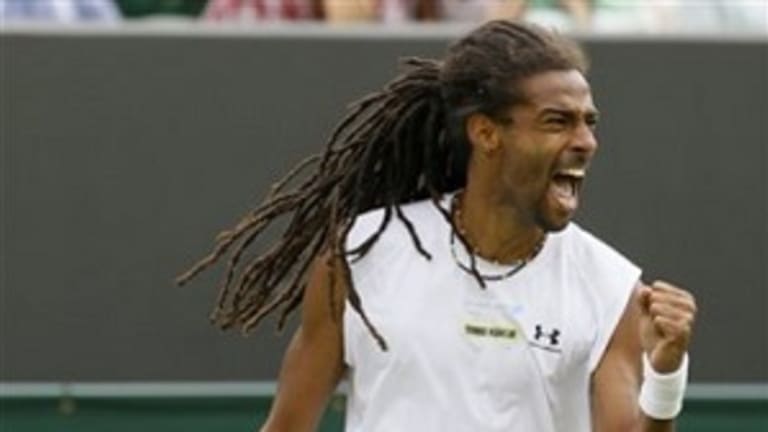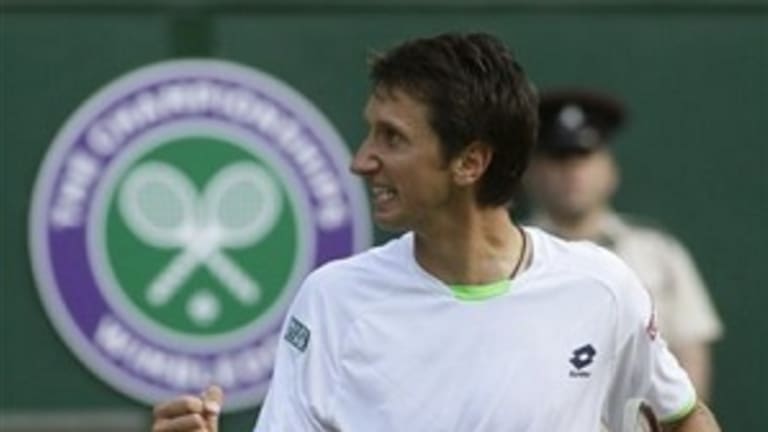Slow, but perhaps not quite as slow as some think. Sijsling is of the ignorance is bliss school. He put it this way: “I heard it (the grass) became slower, but I haven't been playing a lot of years here. So to me, the grass is still pretty fast, one of the fastest surfaces. I try to play attacking game and use the serve and volley in my advantage.”
In fact, a fair number of players are aware of the potential benefits of serve-and-volley tennis, and the reality may be that the biggest impediment to a resurgence of attacking tennis is the lack of fast-court surfaces, or tournaments where the conditions can have as much impact as they had at Wimbledon this week. After all, none of this is rocket science; players right up into the Federer era had little trouble making the transition from flat-out serve-and-volley play to the more prudent baseline game demanded by slower surfaces.
Federer himself said, “It is a tactic you can use if you play it the right way—if you have a big enough serve, you move good enough. Clearly you also have to be good enough from the baseline on the return because you need a break once in a while.”
It’s too bad that Federer stopped short of adding that the surface also has to be friendly to the attacking game—or at least more friendly than it has been in recent years.
Federer does touch on another subtle but important point—the shift of emphasis in recent years from the serve to the return—a change propelled according to some by changes in racquet frame and string technology that are more helpful to the returner than the server.
And that’s where I believe some of the major misconceptions and one of the great shortcomings of this era lies. Servers have turned the game over to returners. By eschewing the attacking game so comprehensively, they’ve not just invited returners to play with a lot more confidence, they’ve also unshackled them from what was traditionally one of the greatest challenges for even a good returner—return placement.
Today’s players know they can take huge cuts and produce returns that make spectators ooooh and aaaaah because they don’t have to be accurate, they can hit with as much topspin as they like (real world meaning: the ball can travel as high over the middle of the net as possible); they don’t even have to worry about where an opponent is. But demand that a returner reduce his target area from one half of the court or the other to a much narrower window along either sideline, and it’s an entirely different ballgame. Force him to hit the ball past you and now you’re adding the element created by something familiar to all tennis players and fans—pressure.
We may never see serve-and-volley tennis of the kind that we grew accustomed to back in the 1960s and 70s, and I don’t think it’s a poorer game for that. But we could certainly use seeing a lot more of the attacking game than we do now, and that would make it a richer game, as well as a more demanding one for many of the players.
You may remember that baseliner Ivan Lendl—whose lifelong quest to win Wimbledon never did pan out—was considered a pariah for a good portion of his career, partly because he took particular satisfaction in drilling opponents (particularly his rival John McEnroe) who dared to attack the net against him.
Federer, it was noted, also hit the ball at Stakhovsky a number of times during their match. He was asked a number of questions about it later, some of them seeming to suggest that there was something untoward or inappropriately aggressive about hitting the ball as hard as you can, right at your opponent.
"It's more tactical, I guess.” Federer replied, unperturbed. “I knew coming in he was going to come. I knew sometimes also I was going to go after him just to try to win the point, not to hurt him.”
He smiled and added, “This is not the juniors here.”
No, indeed. And when Federer comes off looking like another Lendl, you know something weird is going on. Maybe that isn’t entirely bad, either.

